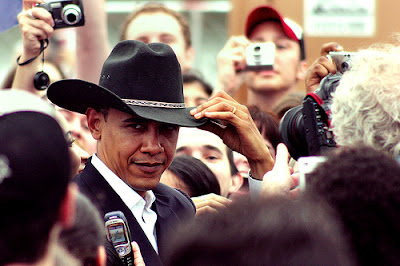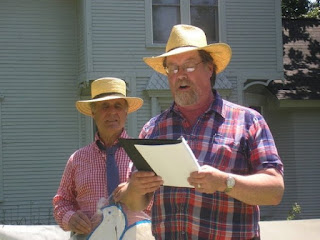The news of Adrienne Rich’s death spread like
wildfire across my Facebook news
feed last night. Obits, bios, quick reminiscences
of brief encounters, and simple wails of grief were posted, mostly by women but
also from men who dare to admit that they read and love poetry.
She was 82 when she
died yesterday in California, a long
way from the life of privilege and learning into which she was born in Baltimore on May 16, 1929.
Her father was a noted professor of medicine
at prestigious Johns Hopkins and her
mother had been a concert pianist. He
was a secular Jew, she a lady like Southern Protestant. Adrienne and her sisters were raised, not
very intensively as nominal Christians.
Both parents cherished
learning. Before she was of kindergarten
age Adrienne was reading from their vast library, mostly English poets. Not trusting
their bright children to drab public education, Adrienne and her sister were
educated at home in that library until the fourth grade. In her later years she was sent to a fine girl’s
school, Roland Park Country School,
which she later credited with providing “fine role models of single women who
were intellectually impassioned.”
The progression to Radcliff College for her undergraduate
degree was a natural one and she continued to flourish in the all women
environment. She also took classes,
mostly in poetry, at very male Harvard. Her very first collection of poetry, A
Change of World, was written as an undergraduate, selected by none
other than W.H. Auden for
publication as the Yale Younger Poets
Award winner. Auden wrote a
thoughtful introduction lauding her technical competence, craftsmanship and “…elegance
and simple and precise phrasing.”
Thus impressively
launched on a noteworthy literary careers she traveled to Europe on a Guggenheim Fellowship in 1952. Part way into the year she abandoned formal
study to linger in Italy.
On returning to the United States in 1953 Rich married
Harvard economist Alfred H. Conrad and
settled into the life of an academic wife in Cambridge, Massachusetts. Her
first child, David was born in 1955,
the same years as her second collection, The
Diamond Cutters and Other Poems,
earned praise and garnered awards. Two
more sons were born and she struggled to balance the demands of marriage,
motherhood, and writing. She felt a
failure at all of it.
Despite continuing to publish successfully, Adrienne could have been
the model of the kind of accomplished, highly educated woman stifled by
conventional domesticity that Betty Friedan wrote about in Feminine Mystique.
The themes began to emerge more forcefully in her poetry. She abandoned the carefully crafted lines of
metered rhyme which characterized her earlier work and began to work in blank
verse. The poems became more frankly
autobiographical. Snapshots of a
Daughter-In-Law in 1963 delved into that struggle followed in 1966 with
Necessities of Life.
Now both a recognized literary superstar and open feminist, Rich’s
career began to eclipse that of her husband.
He moved with her to New York
City when she accepted a post at Swarthmore. She latter also taught in the Graduate School
of Columbia University, and a free
style “open university” at the City
Colleges of New York. During this
period she became deeply and publicly involved not only in the feminist
movement, but in opposition to the Vietnam
War, and moved in increasingly leftist circles. She hosted events for the Black Panthers and was a noteworthy signatory
of the Writers
and Editors War Tax Protest pledge, vowing to
refuse tax payments in protest to the war.
Her poems were now
overtly political. The publication of Leaflets,
an examination of the turmoil of the 1960’s, secured Rich’s place as a leading
radical voice.
But all of this placed
a strain on her marriage. He husband
felt she was literally losing her mind and moved out. He was quite wrong. She hadn’t lost her mind, but had decided to
become the quintessential class
traitor. Three months after the
separation Alfred Conrad shot and killed himself. It was a naturally traumatic event to Rich
and her children.
Ye the accolades and
award continued to pile up. There was the Eunice
Tietjens Memorial Prize from Poetry
Magazine, the Shelley Memorial Award from the Poetry Society of America, another Guggenheim
Fellowship, and various prestigious academic appointments.
She reached perhaps the
pinnacle of her literary career with the publication in 1973 of Diving into the Wreck.
This was the most intensely personal work yet, anguished and angry yet
clear of thought and expression. She was
picked to share the National Book Award
in Poetry with Allan Ginsberg in
1974, but declined to accept it as an individual. Instead she made national headlines
by going to the podium with Alice
Walker and Audre Lorde to accept
the award on behalf of all women writers.
Rich’s life and work
changed dramatically in 1976 when she began her life long relationship with Jamaican-born
novelist and editor Michelle Cliff. She would later say that her lesbianism was
both the natural fulfillment of desires and yearning suppressed since girl’s
school and a political statement. Her
writing began to express this new life, both philosophically in works like Of Woman Born:
Motherhood as Experience and Institution, her first significant prose work, and lyrically in frankly erotic
poetry, the pamphlet Twenty-One
Love Poems.
She has continued to hold important teaching posts at Rutgers, Scripps
College of San Jose
State University, and Cornell. She dedicated more time to essays, literary criticism,
and political theory, publishing several well received books.
Rich and Cliff settled
in California and co-edited an important Lesbian
journal, Sinister Wisdom
in 1981. She published three more books
of poetry in the 1980 and garnered more literary awards-- the
Ruth Paul Lilly Poetry Prize in 1986,
the Elmer Holmes Bobst Award in Arts and
Letters from NYU, and the National Poetry Association Award for
Distinguished Service to the Art of Poetry both in 1989.
A revived interest in
her Jewish identity and what it means to be a leftist Jew led her to found. Bridges: A Journal for Jewish Feminists
and Our Friends in 1990.
An
Atlas of the Difficult World, published in 1991, won
the Los Angeles Times Book Award
in Poetry, and the Lenore Marshall/Nation
Award, Commonwealth Award in
Literature as well as the Poet’s
Prize in 1993. In 1994 she became a MacArthur Foundation “genius award”
winner. All the while she served in
mentoring positions to women writers around the world.
In 1997 Rich made
headlines by publicly snubbing the National Medal of Arts in protest to a House of Representatives vote to end
the National Endowment for the Arts and
policies of the Clinton Administration.
She told reporters “I could not accept such an award from President Clinton or
this White House because the very meaning of art, as I understand it, is
incompatible with the cynical politics of this administration...[Art] means
nothing if it simply decorates the dinner table of the power which holds it
hostage.”
In the new century Rich
was slowed by advancing rheumatoid
arthritis but continued to speak out publicly, especially against the
looming war in Iraq.
She was named a chancellor of the board of the Academy of American Poets in 2004 That decade she produced four more
collections of poetry, the last being Tonight No Poetry Will Serve: Poems 2007-2010 and three more collections of essays.
In 2006 she was awarded the National Book Foundation Medal for
Distinguished Contribution to American Letters followed in 2010 with the Lifetime Recognition Award from the
Griffin Poetry Prize.
That’s more than enough
official honors for anyone. But Adrienne
Rich’s legacy cannot be measured in plaques, certificates, and engraved
bowls. It is in the hearts of all of the
readers whose lives she touched and enriched, all the students she nurtured,
all of the writers she encouraged.
What Kind of Times Are These
There’s a place between two stands of trees where the grass
grows uphill
and the old revolutionary road breaks off into shadows
near a meeting-house abandoned by the persecuted
who disappeared into those shadows.
I’ve walked there picking mushrooms at the edge of dread,
but don't be fooled
this isn’t a Russian poem, this is not somewhere else but
here,
our country moving closer to its own truth and dread,
its own ways of making people disappear.
I won't tell you where the place is, the dark mesh of the
woods
meeting the unmarked strip of light—
ghost-ridden crossroads, leafmold paradise:
I know already who wants to buy it, sell it, make it
disappear.
And I won’t tell you where it is, so why do I tell you
anything? Because you
still listen, because in times like these
to have you listen at all, it's necessary
to talk about trees.
—Adrienne Rich


